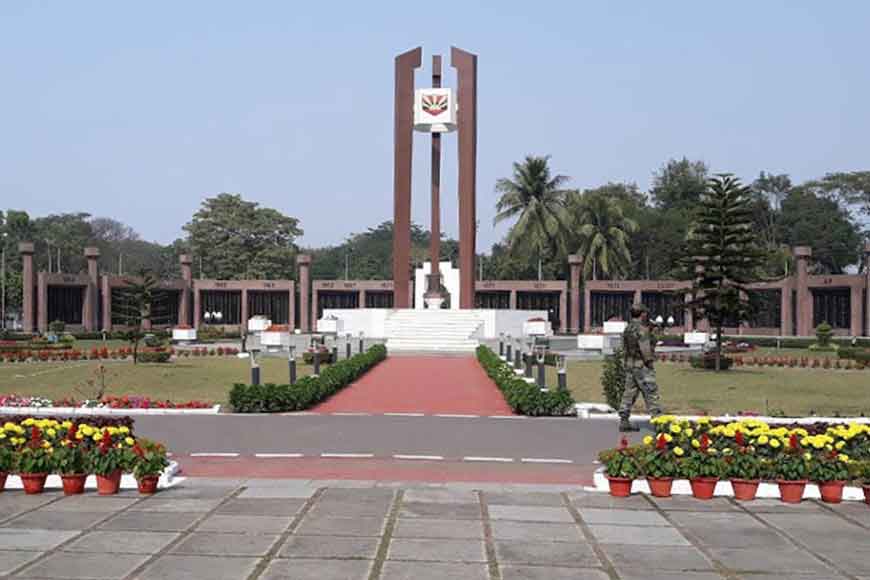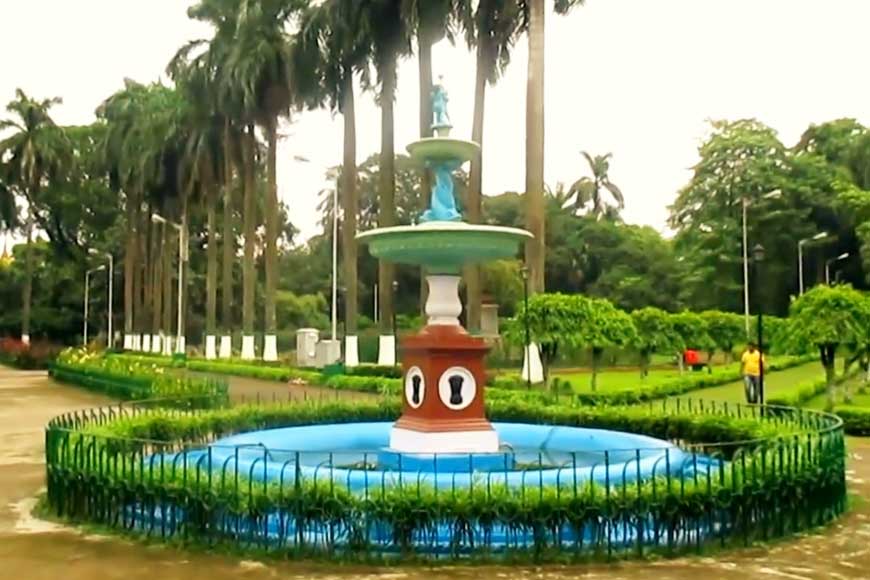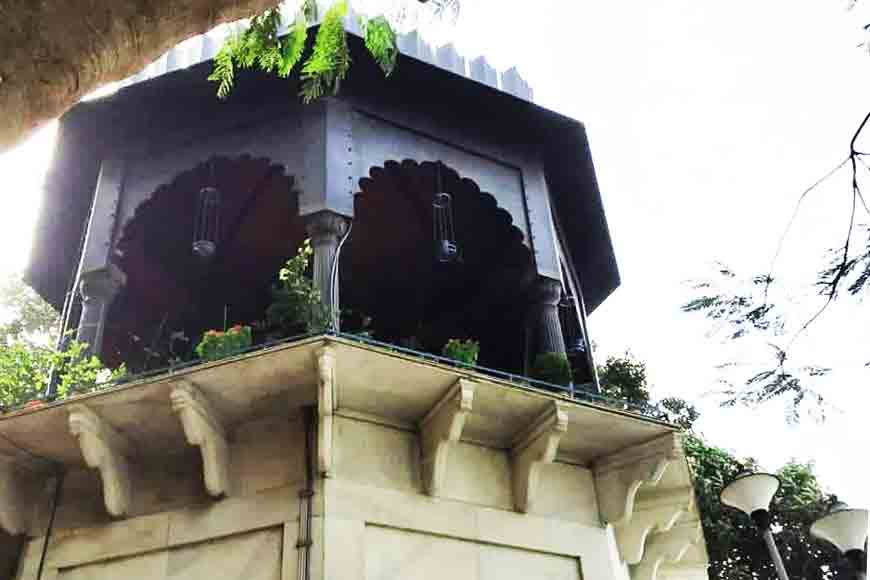On the waterfront: a walk along the Hooghly

Fort William
At the end of our very interesting walk last week, we had headed back to Esplanade, and it is from here that we will strike out in a new direction this week for our sixth episode - the waterfront. The walk will take in notable institutions along the east bank of the Hooghly, the river that made Calcutta such an attraction for European traders. Yes, the river has shifted westward by about 50 m since the time the British landed on its banks for the first time, which means that many of the structures that once stood directly on its banks now appear more inland.
You could choose to start off from either Esplanade, Curzon Park, or the Park Street-Chowringhee crossing. In other words, the centre of Kolkata. Crossing Red Road near the memorial to the ‘Glorious Dead’ in the two World Wars, you will reach your first destination.
Point A - Fort William
What you see today is the ‘new’ fort, completed in 1772. The old fort stood where the General Post Office (GPO) now stands, and suffered extensive damage when Siraj-ud-Daulah raided Calcutta in 1756. Today, entering the fort requires prior permission from the Indian Army authorities. But it would be worth your while to put in that effort, because the Fort William Museum ought not to be missed. Apart from exhibits on the old and new fort, it also displays a large collection of weapons from various eras, and interesting photographs of India’s military milestones.
That apart, you will see such famous structures as Kitchener House, Flagstaff House, St Peter’s Church. Yet another famed attraction is the cannon, used since 1757 to announce the 1.00 pm alert. Walking around these, it is easy to reimagine the days when Fort William formed the base of renowned British military campaigns in Nepal, Afghanistan, Assam, Burma, and other areas.

Point B - Eden Gardens
What is Kolkata without Eden Gardens Stadium? What is now the domain of the Cricket Association of Bengal was once the home of Calcutta Cricket Club, formed in 1825. However, the club’s initial playing field was located nearer Fort William, from where it had to be shifted owing to objections from the British Army. In 1854, then Viceroy Lord Auckland reportedly helped the club shift to the new grounds where the stadium stands today. Still later, the club eventually moved to the present premises of Calcutta Cricket & Football Club on Gurusaday Dutta Road.
Cricket apart, Eden Gardens actually began life in 1841 as a garden (or park, if you wish) in the northwest corner of what was the Maidan, named after Lord Auckland’s sisters Emily and Fanny Eden. The cricket stadium came up in 1864, making it India’s oldest. Of course, almost nothing of old now survives, except the land itself.
The garden was initially named ‘Auckland Circus Gardens’ but the name later changed to ‘Eden Gardens’, apparently inspired by the Garden of Eden in the Bible. The popular story goes that Babu Rajchandra Das, a contemporary zamindar of Kolkata, gifted Mar Bagan, one of his biggest gardens beside the river Hooghly, to Lord Auckland and Emily Eden after they cured his daughter of a fatal disease. Eventually, Mar Bagan became Eden Gardens.
Point C - Prinsep Ghat
After all these years, many of us still insist on spelling the name as Princep. The fact is that Prinsep Ghat was built in 1841 along the banks of the Hooghly as ‘Coolie Ghat’, and became Prinsep Ghat once its beautiful Palladian porch was designed by W. Fitzgerald and added in 1843, in memory of eminent Anglo-Indian scholar and antiquary James Prinsep.
Read the earlier episodes of our walk :
Enjoy the lockdown with your very own customised Kolkata Walk
A little bit of BBD Bag, a whole lot of Calcutta
Esplanade, the beating heart of old Calcutta
The places of worship in old Calcutta, and what we learn from them
Walk on for a perfect balance of religion and commerce
Restored by the state’s Public Works Department in 2001, the memorial and ‘ghat’ have since been well-maintained. At one time, all royal British entourages used Prinsep Ghat jetty for embarkation and disembarkation. Today, Prinsep Ghat remains one of Kolkata’s oldest recreational spots, and a two-kilometre stretch of the renovated and beautified riverfront from Prinsep Ghat to Babughat was opened to the public in 2012. This is the erstwhile Strand, from which Strand Road took its name, and which is visible in many paintings and photographs of old Calcutta.
Prinsep Ghat also has a railway station named after it, as part of the Kolkata Circular Railway which is maintained by Eastern Railways.

Point D - Gwalior Monument and Outram Ghat
The Gwalior Monument has been extensively written about on our site, and you can read all about it here, but do go and see it for yourself, if only to go through the fascinating list of names of soldiers who died in the Gwalior campaign, both British and Indian. Also, once you see it with your own eyes, you will realise why the British themselves jokingly referred to it as the ‘Pepper Pot’, complete with lid! Commissioned by then Governor-General Lord Ellenborough in around 1850, the monument was also called ‘Ellenborough’s Folly’, whether to indicate his foolishness or as a reference to one of the English meanings of ‘folly’ as ‘a costly ornamental building with no practical purpose’, we will never know.
Before you leave, check out a small plaque on the ground floor entrance that reads: “This Monument has been restored in 1990 by The UB Group, 1 Vittal Mallya Road. Bangalore - 560001, under the supervision of the Calcutta Chapter of INTACH, the Indian National Trust for Art and Cultural Heritage.”
A little further on stands Outram (pronounced oot-rum) Ghat, in memory of famed military commander Sir James Outram, perhaps best known for his leadership of the British forces to end the siege of Lucknow during the Mutiny of 1857, and his command during the Afghan War of 1838. The ghat was built in the late nineteenth century, and used to be a key port for ships bound for East Bengal and Burma.
Next week, we shall try and complete the riverfront walk if it doesn’t prove too long for you, taking in a few more well-known ghats.










